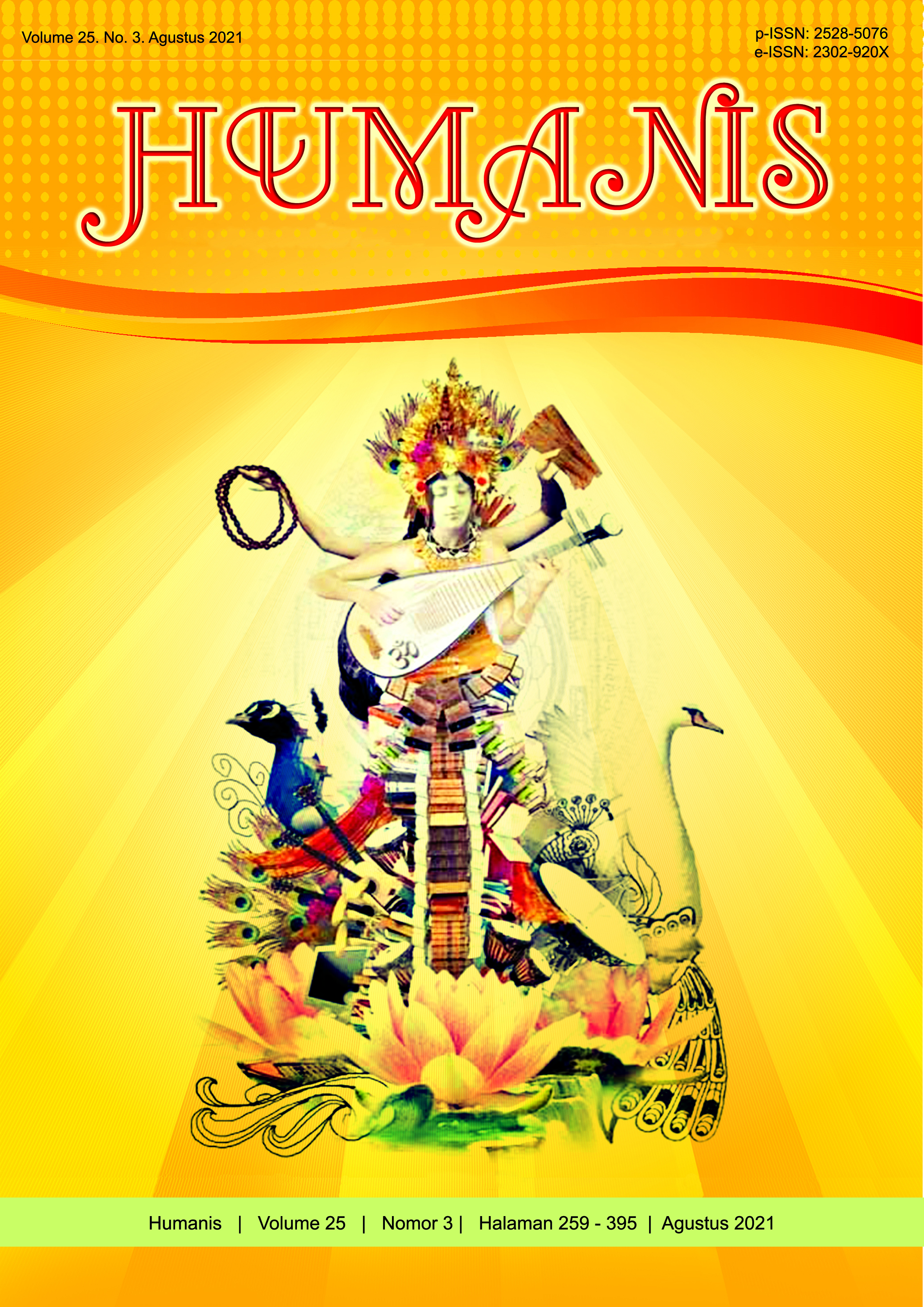The Meaning of The Verb 'Destroy' in the Balinese Language: A Natural Semantic Meta Language Approach
Abstract
This research focused on the discussion about the analysis of the lexicon of the verb 'destroy' in the Balinese language. The data of this research are taken from some verbs in one meaning field with the verb 'destroy' which is found in the Balinese language. After the data collected, the data are analyzed based on the entities, the tools the manners which are related to the lexicons of the verb 'destroy'. Then, the findings of the research are presented descriptively. Based on the analysis, the lexicons in the Balinese language which have the same meaning field with the verb 'destroy' are Ngencakin, Ngremukin, Nguwugang, Menyahin, Nglidekin, Ngededekang, Ngeregreg, Nyakcakin, Nyetset, Mesbes, Ngincuk, and Ngenyagin. They are in the same meaning field but has different meaning based on the context of usage.
Downloads
References
Budiarta, I. W. (2016). Compound Words In Dawan Language. 2(1), 1–15.
Dgglwlrqdo, R. U., Derxw, L., Duwlfoh, W., & Edwards, O. (2016). Parallel Sound Correspondences in Uab Meto.
Durst, U. (2004). The Natural Semantic Metalanguage approach to linguistic meaning. Theoretical Linguistics, 29(3), 157–200.
Engelenhoven, A. V. A. N. (2010). The Makuva Enigma : Locating A Hidden Language In East Timor. 161–181.
Farese, G. M. (2015). Hi vs. Ciao: NSM as a tool for cross-linguistic pragmatics. Journal of Pragmatics, 85, 1–17.
Goddard, C., & Wierzbicka, A. (2016). “ It â€TM s mine ! ” . Re-thinking the conceptual semantics of “ possession ” through NSM. Language & Communication, 56, 93–104.
Goddard, C. (1997). Universal Sintax and Semantic Primitives. Language Sciences, 19(3), 197–207.
Goddard, C. (2015). The Natural Semantik Metalanguage Approach. Oxford Handbooks Online.
Honours, B. A., Rsa, D., Rsa, C., & Ed, M. (2007). The Ecology of Language Planning in Timor -Leste A study of language policy , planning and practices in identity construction.
Sona, M. G., & Budiarta, I. W. (2018). A Natural Semantic Language Approach to Dawan Verb ‘To Take.’ RETORIKA: Jurnal Ilmu Bahasa, 4(2), 138–145. https://doi.org/10.22225/jr.4.2.740.138-145
Sudaryanto. (1993). Metode dan Aneka Teknik Analisis Bahasa: Pengantar Penelitian Wahana Kebudayaan secara Linguistik.
Sudipa, I. N. (2012). Makna “Mengikat” Bahasa Bali: Pendekatan Metabahasa Semantik Alami. JURNA L KAJIAN BALI, 2, 49–68.
Swarniti, N. W. (2019). The Translation Procedures of Bible Translation. RETORIKA: Jurnal Ilmu Bahasa, 5(2), 187–196. https://doi.org/10.22225/jr.5.2.1277.187-196
Swarniti, N. W. (2021). A Corpus Based Approach to the Analysis of Structures in Prepositional Phrase. Yavana Bhasha: Journal of English Language Education, 4(1), 18–22.
Widani, N. N. (2016). Makna “ Mengambil ” Bahasa Bali : Pendekatan Metabahasa Semantik Alami ( Msa ). RETORIKA, 2(1), 127–141.
Wierzbicka, A. (1996). Semantics : primes and universals.
Wierzbicka, A. (2007). Bodies and their parts: An NSM approach to semantic typology. Language Sciences, 29(1), 14–65.


















